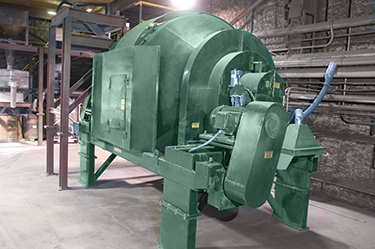Rotary batch mixer achieves 100% uniformity in three minutes. Gentle action preserves "green strength" of powder metal.
Blend is discharged into hopper for transfer to packaging area.
Hopper discharges iron powder, then additives into the blender.
Gentle mixing and shorter cycle times preserve the "green" (unsintered) strength of powder metal parts — verified by measuring the breaking point of green test bars as shown.






